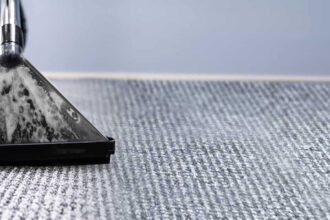When it comes to transforming a room from ordinary to extraordinary, the details matter most. Among the many decorative techniques available to designers and homeowners, gessolini stands out as a sophisticated method that brings both texture and visual interest to any space. This ancient Italian plastering technique has gained renewed popularity among interior designers who appreciate its ability to create stunning, custom finishes that can’t be replicated with standard paint or wallpaper.
Gessolini represents more than just a decorative technique—it’s an art form that combines craftsmanship with creativity. The process involves applying multiple layers of specialized plaster to create subtle textures and depth that change throughout the day as light moves across the surface. This dynamic quality makes gessolini particularly appealing for those seeking to add character and sophistication to their interiors.
Whether you’re renovating a historic home or adding character to a modern space, understanding gessolini can help you make informed decisions about incorporating this timeless technique into your design plans. From its rich history to practical application methods, this versatile finish offers endless possibilities for creating truly unique environments.
What Is Gessolini?
Gessolini is a traditional Italian decorative plaster technique that creates smooth, polished surfaces with subtle variations in color and texture. The name derives from “gesso,” meaning plaster or chalk in Italian, with the diminutive suffix “-ini” indicating a refined, delicate application.
This technique involves applying thin layers of lime-based plaster using specialized tools, typically trowels and floats, to build up a surface that appears almost marble-like when complete. The final result showcases gentle undulations and tonal variations that create visual depth without overwhelming a space.
Unlike standard painted walls, gessolini surfaces reflect and absorb light differently throughout the day, creating an ever-changing backdrop that adds life to any room. The technique can be adapted to various aesthetic preferences, from subtle, monochromatic finishes to more dramatic color combinations.
The History Behind Gessolini
The roots of gessolini trace back to ancient Roman times when artisans developed sophisticated plastering techniques for both practical and decorative purposes. These early craftsmen discovered that lime-based plasters could be manipulated to create beautiful, durable surfaces that protected walls while enhancing their appearance.
During the Renaissance period, Italian artisans refined these techniques, developing the methods we recognize as gessolini today. Master craftsmen passed down their knowledge through generations, each adding their own innovations and regional variations to the process.
The technique spread throughout Europe as Italian artisans traveled to work on prestigious projects in palaces, churches, and wealthy residences. Each region adapted the basic gessolini principles to local materials and aesthetic preferences, creating distinct regional styles that still influence contemporary applications.
Benefits of Choosing Gessolini for Your Space
Gessolini offers numerous advantages over conventional wall treatments, making it an excellent investment for both residential and commercial spaces. The technique creates surfaces that are naturally antimicrobial and resistant to mold and mildew, thanks to the lime content in traditional plaster mixtures.
Durability stands as one of gessolini’s most compelling features. When properly applied and maintained, these surfaces can last for decades without showing signs of wear or requiring significant touch-ups. The technique actually improves with age, developing a natural patina that enhances its visual appeal over time.
The versatility of gessolini allows it to complement various design styles, from rustic Mediterranean to contemporary minimalist aesthetics. This adaptability makes it an excellent choice for homeowners who want a distinctive finish that won’t quickly become outdated.
Environmental considerations also favor gessolini, as traditional lime-based plasters contain no volatile organic compounds (VOCs) and allow walls to breathe naturally. This breathing quality helps regulate humidity levels and contributes to healthier indoor air quality.
Different Gessolini Techniques and Styles
Several distinct gessolini techniques have evolved over centuries, each producing unique visual effects and textures. Understanding these variations helps you choose the most appropriate style for your specific project and aesthetic goals.
Smooth Gessolini
The smooth gessolini technique creates surfaces with minimal texture variation, focusing instead on subtle color shifts and light reflection. This approach works particularly well in modern spaces where clean lines and sophisticated simplicity are priorities.
Application involves multiple thin coats applied with broad, sweeping motions that eliminate visible tool marks. The final surface appears almost glass-like while maintaining the warm, organic quality that distinguishes plaster from synthetic materials.
Textured Gessolini
Textured gessolini incorporates more pronounced surface variations, creating tactile interest alongside visual appeal. Artisans use various tools and techniques to build texture, from subtle stippling to more dramatic relief patterns.
This approach suits spaces where you want to add character and visual weight to walls. The texture catches light differently throughout the day, creating shadow patterns that add depth and movement to the surface.
Colored Gessolini
While traditional gessolini often features neutral, earth-toned palettes, colored variations allow for more dramatic design statements. Pigments can be mixed into the plaster or applied as glazes over base coats to achieve specific color effects.
Color application requires careful consideration of the space’s lighting conditions and overall design scheme. Skilled artisans can create gradient effects, color washing, and other sophisticated techniques that would be impossible to achieve with conventional paint.
Application Process and Techniques
The gessolini application process requires skill, patience, and attention to detail. Professional installation typically begins with thorough surface preparation, ensuring the substrate is clean, stable, and properly primed to receive the plaster layers.
Base coat application establishes the foundation for subsequent layers. This initial coat must cure properly before additional layers can be applied, usually requiring 24 to 48 hours depending on environmental conditions.
Successive layers build texture and color depth gradually. Each layer requires specific timing and technique to ensure proper bonding with previous coats. The final layers determine the surface’s ultimate appearance and require the most skill to execute properly.
Polishing and finishing techniques vary depending on the desired final appearance. Some applications require burnishing with specialized tools to achieve high gloss levels, while others maintain a more natural, matte appearance.
Maintenance and Care
Proper maintenance ensures gessolini surfaces retain their beauty and functionality for many years. Regular dusting with soft brushes or microfiber cloths removes surface dirt without damaging the delicate finish.
For deeper cleaning, mild soap solutions can be applied sparingly and immediately wiped clean with damp cloths. Avoid harsh chemicals or abrasive cleaners that could damage the plaster surface or alter its appearance.
Minor damage, such as small chips or scratches, can often be repaired by skilled artisans without requiring complete refinishing. However, extensive damage may necessitate partial or complete reapplication of affected areas.
Periodic professional assessment can identify potential issues before they become serious problems. Many gessolini surfaces benefit from occasional resealing or protective treatments, especially in high-traffic areas or environments with extreme humidity fluctuations.
Cost Considerations and Investment Value
Gessolini installation represents a significant investment compared to standard paint or wallpaper applications. However, the longevity and unique character of this finish often justify the higher initial cost when viewed as a long-term investment.
Professional installation costs vary based on surface area, technique complexity, and regional labor rates. Complex designs or specialized color work typically command premium pricing due to the additional skill and time required.
The investment value extends beyond mere aesthetics. Quality gessolini work can increase property values, particularly in markets where buyers appreciate custom craftsmanship and unique architectural details.
Consider the long-term maintenance costs when evaluating gessolini options. While initial installation is expensive, the durability and timeless appeal often result in lower lifecycle costs compared to treatments requiring frequent replacement or updating.
Choosing the Right Professional
Selecting qualified artisans is crucial for achieving excellent gessolini results. Look for professionals with demonstrated experience in traditional plastering techniques and portfolios showcasing various gessolini applications.
Request references from previous clients and examine completed projects in person when possible. The quality variations between skilled and inexperienced applicators can be dramatic, making due diligence essential for project success.
Verify that potential contractors understand the specific requirements of your project, including any historical preservation considerations or compatibility requirements with existing architectural features.
Discuss timeline expectations and understand that quality gessolini work cannot be rushed. Each layer requires proper curing time, and weather conditions can affect application schedules significantly.
Transform Your Space with Timeless Elegance
Gessolini offers a unique opportunity to incorporate centuries-old artisan traditions into contemporary living spaces. This sophisticated finish technique provides both aesthetic beauty and practical benefits that modern synthetic materials cannot match.
The investment in professional gessolini work pays dividends through increased property value, improved indoor air quality, and the satisfaction of owning truly custom architectural features. Few decorative techniques offer such a compelling combination of beauty, durability, and environmental responsibility.
Consider consulting with qualified artisans to explore how gessolini might enhance your specific space. The consultation process often reveals possibilities you might not have considered and helps ensure your project achieves the sophisticated results this ancient technique can provide.

















